The primary weakness in U.S. military plans for worldwide power projection is a lack of strategic lift, of which cargo and tanker aircraft are prime components. The General Accounting Office reported in July 2000 that the U.S. military is 29% short of airlift and 19% short of refuelers to support current war plans. Unfortunately, this problem is given little thought as most funds are expended on sexy programs like the F-22 and V-22. The Air Force needs to replace its basic assets, like the 472 KC-135 tankers, which average 40 years old and are very expensive to maintain. The C-5s need a major overhaul, and the C-141 fleet is retiring and only partially replaced with C-17s. Airlift affects all the US military services, so top generals must carve out a strategic airlift plan and cut a deal with Boeing to buy 800 large aircraft at half price.
Since Boeing is the only American manufacturer of large aircraft, the problem of competitive bidding is no obstacle. It would be simple to select a proven Boeing design which already has a worldwide parts system in place. The 747-400F "Freighter" is a good choice, or maybe the long-range, two-engine 777, which is cheaper to operate. Boeing has also designed a new 747X "stretch" version, which can carry 23% more cargo.
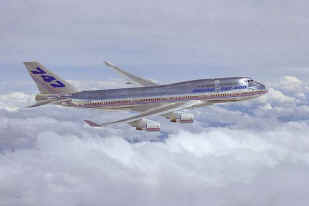
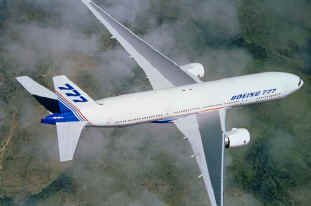
Two CX options, the Boeing 747F or economical 777
The C-17 is too small and far too expensive. The U.S. Air Force bought 12 Boeing C-17 transports during FY2000 at a cost of $217 million each, while Singapore Airlines bought 15 Boeing 747-400 Freighters at a cost of $86.6 million each. A 2002 long-term contract has lowered the price to $161 million per C-17, however, the slow down in passenger aviation has left dozens of slightly used 747-400s parked in desert storage which could be purchased for ~$30 million from US airlines facing bankruptcy. The airlines are dumping their 747s since the two-engine 777s are much more profitable to operate.
Although the C-17 can be unloaded without large cargo lifts, the 747-400 has twice its range and twice its payload. Air cargo can be moved by C-5s and C-17s while C-747s fly mostly personnel, although cargo lifts are available. Most military cargo lifts are between established US Air Force bases. It is far more economical to use 747s for these inter-theater missions, while C-130s and C-17s perform the intra-theater lifts to smaller airfields. The Australian Air Force already uses 747s for airlift and tanker support, which is detailed in an outstanding on-line document at its Aerospace Center.
Boeing could sell a block of 800 aircraft at half price if the US Congress approves a multi-year buy with a flexible delivery schedule. With a guaranteed huge order, Boeing could launch the 747X program and negotiate much better prices with subcontractors. This would lower all production costs, thus boosting profits from private sector sales. A 800-aircraft order stretching 20 years would also provide labor stability and future profits in the spare parts business.
However, the biggest enticement for providing half price aircraft would be a flexible delivery schedule, something like 30-50 aircraft a year. One of the biggest problem with building large aircraft is the lengthy construction process. Businesses looking for aircraft often want them in a year, but it takes several years to build them. As a result, Boeing must take risks of building unordered aircraft in anticipation of sales. If the estimate is too low, Boeing may lose sales. If Boeing builds too many aircraft, it must slow production, lay off employees, and store surplus aircraft.
With a flexible, long-term US military order, Boeing can guarantee rapid delivery to take advantage of unexpected opportunities. If an airline suddenly wants 20 large new aircraft the next year, only Boeing could fill such an order by diverting aircraft from the US military order. If worldwide demand slumps, Boeing could deliver up to 50 aircraft to the US military. This flexibility would also help Boeing adjust to production and labor problems in order to guarantee delivery to the commercial market.
Of course this makes U.S. military budget planning more difficult, but the Air Force will get 800 aircraft for the cost of 400. Assuming that a deal could be made in 2001, the first delivery of CX aircraft could begin in 2005 and run for around 20 years. One element of this buy should be 100 bombers. A basic transport aircraft is ideal for the next "B-3" to act as a cruise missile carrier or high altitude bomber.
Besides the obvious benefit of half-price aircraft, the Air Force can derive tremendous logistical benefits of consolidating numerous types of aircraft into one airframe, a process called "necking down". The variety of spare parts and technical knowledge is consolidated, as well as training schools and simulators. Manpower management is easier and and upgrades simple to manage.
Programs managers may dislike the lack of detail of exactly what aircraft will be built and delivered on what date. However, the US military does not know what priorities will exist in 2010. The basic fact is that a large number of 747 size aircraft must replaced over the next 25 years and a Boeing CX program is the best solution. Most of these aircraft will require modifications during construction, so the Air Force would have to decide exactly which variants it wants a year in advance and provide any additional funding for necessary modifications. Since the Boeing CX will be larger and more capable than aircraft they replace, fewer will be required.
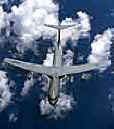
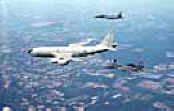
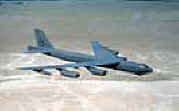

C-141s 472 KC-135s 56 B-52s 82 B1s
Most likely, the Air Force will first buy 200 CXs to increase airlift, then 350 KCX to replace 472 KC-135s, then 100 BXs to replace 56 B-52s and 82 B1s around 2015, followed by another 50 KCXs to replace the KC-10s. This major order will allow the Air Force to back out of the ultra-expensive 767 tanker "lease" deal. The Air Force has never explained why it preferred smaller 767 tankers over larger 747s.
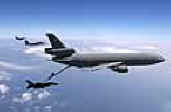
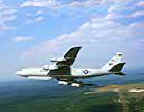
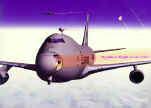
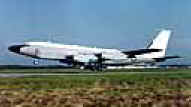
72 KC-10s 14 JSTARS Airborne Laser RC-135s
There are varied types of large aircraft which require around 100 airframes. The Air Force can squeeze them somewhere into the CX program. Some of these aircraft are fairly new, but the last aircraft of the CX program would not roll out until 2025. Current programs, like JSTARS and Airborne Laser, could benefit from this bargain by laying claim to the first aircraft of the CX buy. The Air Force should also consider replacing AWACS with the larger 747 with extra fuel tanks to eliminate the tanker missions needed to keep it airborne for long missions.
The US Navy, NASA, and other government agencies could join the CX buy for half-priced aircraft. The Pentagon should take advantage of its buying power to replace all large U.S. military aircraft with a standard Boeing CX. These new fuel-efficient aircraft and a simplified logistics system should cut operational costs in half. Boeing has not begun production of the 747X because no airline has submitted an order. The US military can "jump start" this program with an order for 800 747Xs at a bargain price. The post-Cold war budget games must make room for this sensible proposal.
Carlton Meyer editorG2mil@Gmail.com
©2002 www.G2mil.com
Letters
Buying 800 747s
Your idea about using the 747 as a common large aircraft replacement for the many current refuelers, hospital planes, AWACS, and transporters is good, too, especially the multi-year buy. The one real problem area I see is with loading and unloading cargo for the 200 CX versions. We've used commercial air freighters since the late 1970s. I had experience with them when I was in the 101st Airborne. The KC-10 air refueler has a secondary capability to carry pallets and small vehicles. Here's the problem. C-130s, C-141s, C5's and C-17s are all drive-on/drive-off. Except for cargo pallets which need forklifts to move to the airplane's back ramp, no special loading equipment is required. Freighter 747s are designed to move between terminals with specialized handling equipment. This eliminates the need for expensive modifications to the 747 in civilian service. Without this airport based handling equipment (even using portable analogs) the loading/unloading process becomes a real bottleneck.
The real chance was missed in the late 1980s. I was at FORSCOM at Atlanta at that time, and Dobbins AFB in Marietta GA was where the C-5 was and C-130 is made. Lockheed engineers said the Air Force ordered the C-5B tooling DESTROYED to guarantee the C-17 would be bought. They should have just bought more C-5Bs.
Mark Gallmeier
Ed. The C-17 was sold on the idea of operating from primitive airstrips, implying dirt strips like the C-130. However, it's jet engines would suck up so much dirt they'd have to be replaced after each mission, assuming it could get airborne. Yes, it can land on shorter hard runways, but not with a full load.